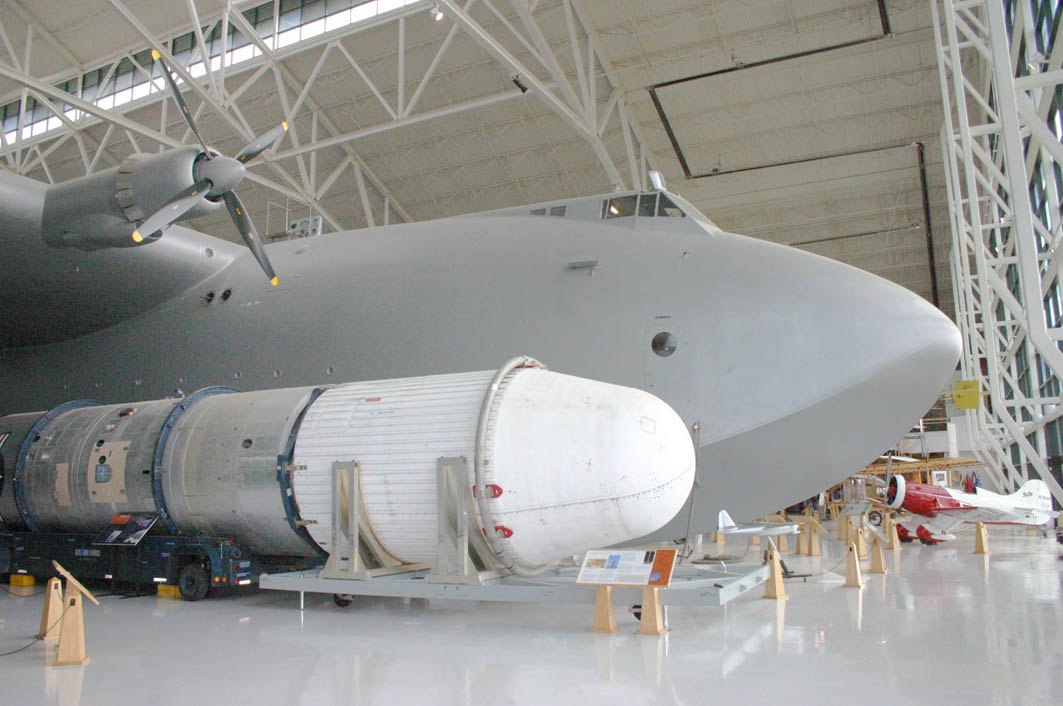
Hughes H-4 Flying Boat
 |
| The unique Hughes H-4, alias the Spruce Goose, NX37602 dwarfs the other exhibits in its specially-built display hangar in McMinnville, Oregon, USA |
|
The amazing Hughes H-4, or Spruce Goose as it is popularly known, was
conceived as a way to cut the loss of ships carrying US troops and
supplies to German U-Boats on the North Atlantic convoy run during
World War II. Henry Kaiser, a US industrialist who had built the Liberty supply ships, proposed a fleet of large flying boats and approached multi-millionaire aviator and movie producer Howard Hughes. They formed the Hughes Kaiser Corporation and obtained an $18million government contract to build three aircraft. Hughes's team designed an aircraft capable of carrying 750 troops which meant eight, 3,000hp R4360m Pratt and Whitney engines would be needed and some herculean feats of engineering. The type was dubbed HK-1, standing for Hughes Kaiser. Keeping to the US government requirement not to use materials crucial to the war effort, the type was built out of wood using a technique called Duramold, where laminations are laid perpendicular to the grain of the layer beneath, increasing strength. The inevitable complications associated with building the world's largest aircraft of the time inevitably produced delays and in mid 1944 Kaiser withdrew from the project as Germany's impending defeat removed the requirement. Hughes pressed on, renaming the type the H-4 and taking personal responsibilty for its design and production. At the war's end, the US government criticised the project for exceeding its budget and investigated an alleged misappropriation of funds. Hughes responded by investing $7million of his own money and the aircraft was assembled in a dry dock in Long Beach, California. On November 2, 1947 newsmen gathered to witness what they expected to be a series of taxi tests of the plane thhey had dubbed the Spruce Goose (a misnomer as it was mainly built of birch) with Hughes at the controls. However, on the third run the eccentric mogul surprised everyone by taking the H-4 aloft for about a mile at an altitude of 70ft for about a minute. The short hop was the flying boat's only flight bbut Hughes felt vindicated because he had proved it would leave the water. Hughes ordered the type to be returned to its hangar and kept flight-ready. It remained in hibernation for 33 years at a cost of about $1million a year until Hughes's death in 1976. Plans were then made to break up the aircraft into nine pieces and send it to various museums. However, the Aero Club of Southern California stepped in and leased it to the Wrather Corporation. In 1980, the Spruce Goose emerged from its hangar and moved across the hhrbour and alongside the Queen Mary liner for display in a purpose-built dome. It opened to the public in 1983 but in the late Eighties the Disney Corporation bought Wrather and in 1990 decided to close the exhibition. Evergreen International won the race for the aircraft and began a complex process of disassembling it and transporting it by barge and road to a purpose-built display hall in McMinnville, Oregon, where it remains. |
| Contents | Photos and census | Update |